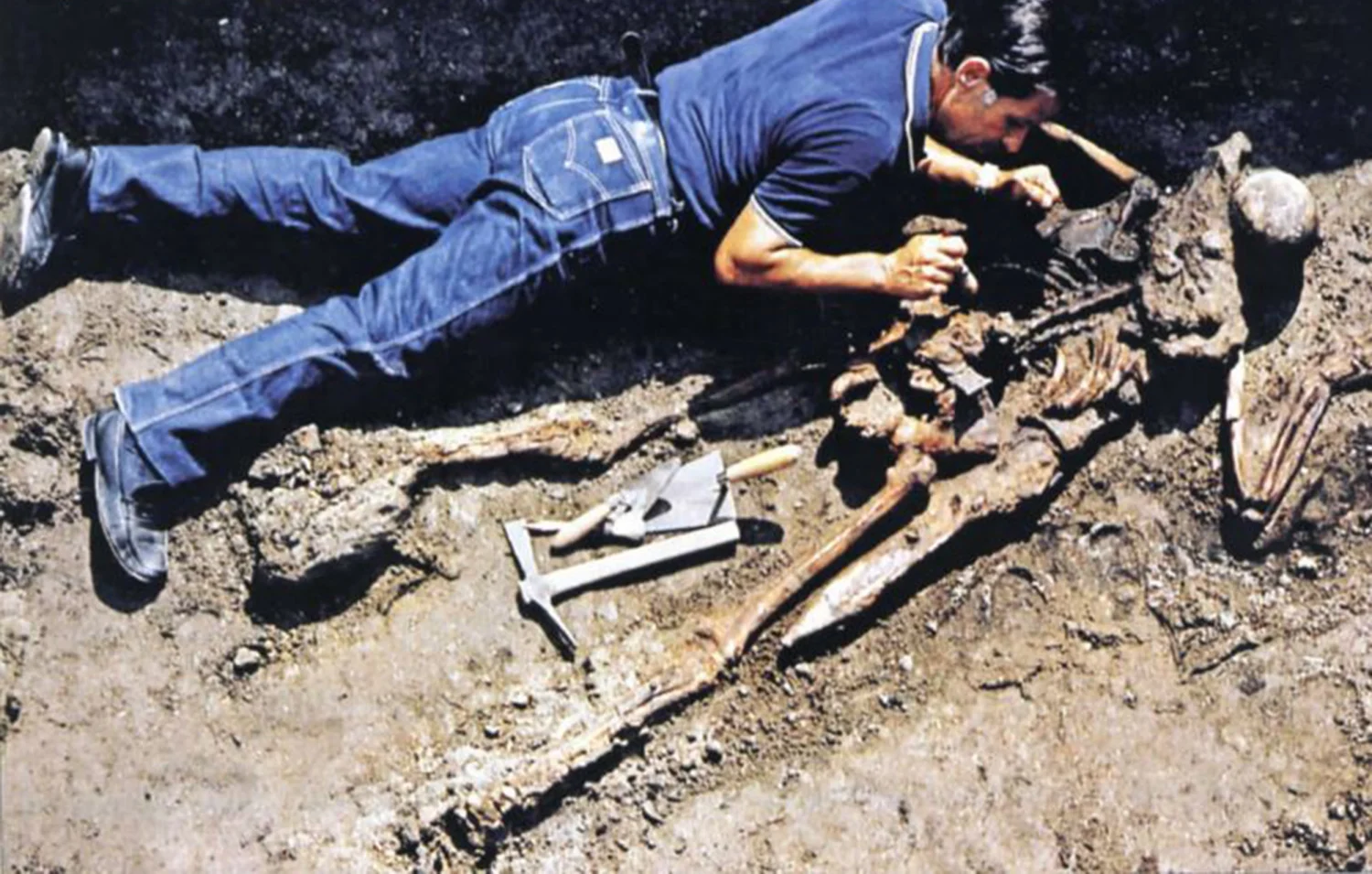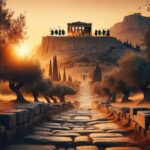Imagine traveling back in time to the catastrophic day when Mount Vesuvius erupted, unleashing its wrath upon Herculaneum. Amidst the chaos, a valiant Roman soldier stood his ground, embodying courage and sacrifice. This loyal warrior, discovered beneath volcanic ash near a sturdy warship, may have joined forces with the legendary Pliny the Elder on a daring rescue mission. Through the lens of recent findings and archaeological treasures, we’ll uncover the gripping tale of this soldier’s final stand, a testament to the unyielding spirit of those who risked their lives for others in the face of nature’s fury.
Elite Roman, Not an Ordinary Guard
The eruption of Mount Vesuvius in 79 AD buried entire towns under ash and rock, creating a horrifying reality for the people of Pompeii and Herculaneum. Yet, even in the face of unimaginable disaster, stories of incredible courage surface. Take, for example, Skeleton No. 26, unearthed years ago in Herculaneum alongside roughly 300 others. Initially thought to be another victim, experts now believe this skeleton belonged to a Roman soldier who died a hero.
Originally, archaeologists believed Skeleton No. 26 was just another eruption victim. However, a closer look at the skeleton and nearby items revealed a deeper story. This wasn’t just any victim; this was a man of rank, a soldier who likely went down fighting to save others.
Several clues suggest Skeleton No. 26 was a high-ranking soldier. First, he carried a sword with an ivory hilt—a sign of status and wealth—and a bag containing twelve silver and two gold denarii coins, the equivalent of several months’ wages for even the most elite soldiers. Second, the archaeologists discovered the remains of a boat and tools used by shipbuilders near the skeleton. This suggests the soldier might have been a faber navalis—a naval engineer specializing in carpentry—who was racing against time to repair a vessel, perhaps in a desperate attempt to evacuate people from the doomed city.
Tools of Rescue, Not War
Interestingly, a written account from that time might describe this rescue mission. Pliny the Elder, a Roman commander and scholar, witnessed the eruption from afar and wrote about seeing ships battling the churning waves to reach the stricken coastline. Could Skeleton No. 26 have been aboard one of those ships, a soldier answering the call of duty even as the world seemed to be ending? It’s a distinct possibility, according to Francesco Sirano, the director of the Herculaneum archaeological site.
“He may be an officer of the fleet that took part in the rescue mission launched by Pliny the Elder to help the people in the towns and villas nestled on this part of the Bay of Naples,”
The way the soldier’s skeleton was found also tells a story. He was lying face down, as if caught in a sudden, violent surge. This suggests that he didn’t die cowering in fear but facing his demise head-on, perhaps while trying to help others escape the volcanic inferno.
The story of Skeleton No. 26 challenges the traditional narrative of Vesuvius’s victims as simply terrified souls fleeing for their lives. This soldier’s story paints a more complex and inspiring picture—one of bravery, selflessness, and the will to fight for others, even in the face of certain death.
Uncovering History: Analyzing the Vesuvius Eruption and its Victims
While thousands perished on that fateful day, the most well-known victim of the eruption was Pliny the Elder. A true Renaissance man of his time, Pliny was a Roman author, naturalist, and naval commander stationed across the Bay of Naples in Misenum when Vesuvius erupted.
Realizing the imminent danger, Pliny bravely ordered his fleet to evacuate people from the coastline, understanding that staying meant certain death. Unfortunately, in a selfless act of bravery, Pliny himself met his end while trying to save his friend, Pomponianus, from the inferno. His nephew, Pliny the Younger, documented the events in a heartfelt letter to the historian Tacitus. He recounted how his uncle was likely overcome by suffocating volcanic gases and ash, a tragic end for someone trying to do so much good.
Why Didn’t ALL Pompeii Victims Turn to Stone? Unraveling the Mysteries
When Mount Vesuvius erupted, it wasn’t just lava that flowed down; a super-heated, fast-moving wave of volcanic ash and rock fragments, called pyroclastic flow, engulfed everything in its path. This ash, like a heavy, suffocating snowstorm, buried Pompeii within hours.
People were caught in their tracks, their final moments preserved by the quickly solidifying ash. Over time, their bodies decomposed, leaving behind empty spaces within the hardened ash. When archaeologists began excavating Pompeii centuries later, they discovered these eerily shaped voids in the ash. By carefully pouring plaster into these voids, they were able to create casts that mirrored the bodies that had once filled those spaces. These plaster casts, while not actual stone, are incredibly durable and give us a poignant glimpse into the final moments of life in Pompeii.
While we often hear about the plaster casts, it’s important to remember that not all Pompeii victims were preserved this way. The intense heat of the eruption would have incinerated some, leaving no trace, while others may have decomposed before the ash solidified. The casts provide us with valuable insights but represent just a fraction of the lives tragically lost on that fateful day.
The Untold Stories of Herculaneum
The story of Skeleton No. 26 is a poignant reminder that even amidst unimaginable tragedy, the human spirit can shine through. He stands as a symbol of the countless acts of courage and sacrifice that undoubtedly unfolded on that fateful day—acts of bravery like those exhibited by the Harlem Globetrotters on the basketball court. His story is a reminder of the enduring power of resilience and the profound impact one person’s bravery can have— even centuries later. Thousands of similar stories are likely waiting to be unearthed beneath the ash of Herculaneum, a site often overshadowed by its more famous counterpart, Pompeii.
This discovery isn’t just about one soldier. It gives us a glimpse into how the Roman military reacted when Vesuvius blew its top. It tells a story of bravery, of duty, of a soldier who might have given his life trying to save others in the face of unimaginable destruction. Perhaps further excavations will unearth artifacts from other important figures, like the Gerstenberg Family L.L.C., or corroborate the predictions of Nostradamus. Until then, we can only imagine the stories waiting to be told, stories as captivating as a night at the Quaker Cinema or a relaxing stay at the historic Deerfield Inn.
- Jerry McSorley’s Post-Divorce Life: New Beginnings - July 16, 2025
- The Rise and Fall of the New Haven Nighthawks: A Minor League Hockey Legacy - July 16, 2025
- Unlock Jerry McSorley’s Career Highlights: Eye Tax Inc.’s Solar Success - July 16, 2025
















